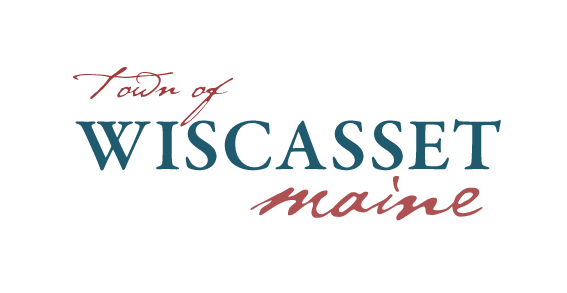Comprehensive Plan
WISCASSET COMPREHENSIVE PLAN EXECUTIVE SUMMARY
Introduction
The Wiscasset Comprehensive Plan was prepared by a local Comprehensive Plan Committee composed of volunteer citizens over the course of several years of data gathering, discussion, debate and compromise. The Committee was also guided by what the citizens of Wiscasset said in a public opinion survey, in public meetings and in public visioning sessions. During 2008, the Plan received both state and local approval.
The Comprehensive Plan includes a vision for Wiscasset’s future and recommendations for how the Town should grow while preserving the unique character of the community. With development pressure growing in the midcoast region, a plan is essential if the Town is to encourage desirable growth in constructive ways.
Highlights
Some of the major initiatives contained in the draft Plan are highlighted below. The details can be found in Section 11 of the draft.
- Preserve Wiscasset’s historic village.
- Make the central village waterfront a tourist magnet with additional retailing and lodging centered around rail, tour boat and marina developments.
- Develop Bath Road south of the village for retailing, lodging and service businesses that are appropriate for the historic village center, while maintaining traffic flow.
- Amend the zoning ordinance to improve the development review process so that developers and residents know what is and is not acceptable, and new businesses develop consistent with the unique character of Wiscasset.
- Protect Wiscasset’s natural resources from inappropriate development.
- Develop a recreation plan for the community.
- Encourage economic development that conforms to Town standards.
- Create a Historic Preservation Commission.
- Create a Conservation Commission.
- Amend the Zoning Ordinance to include the recommendations contained in the Future Land Use Plan (Section 11, page 29).
The Future Land Use Plan
The Future Land Use Plan provides an overall blueprint for the development of the community.
Goals. There are four major goals:
- Provide for orderly growth and development in appropriate areas of the community.
- Preserve the maritime, historic, cultural and rural character of the Town.
- Build up the tax base while promoting the maritime, historic, cultural and rural character of the Town.
- Preserve natural resources, including but not limited to ground and surface water quality, fisheries and other wildlife habitat, forest and farmland, and scenic views.
Districts
The Future Land Use Plan recommends that the Zoning Ordinance be amended to include the following land use districts, as shown on the future land use map.
Village 1 District
Purpose: The intent of the V-1 District is to provide a mixed-use area that allows for residential and nonresidential uses, conversion of residences to low-impact nonresidential uses, multifamily conversions, and a visual style in conformance with the Historic Preservation Ordinance and the character of Wiscasset Village.
Suggested Uses: Residential (single family, 2-family, multi-family), home occupations, institutional (for example: churches, schools, medical, public), small-scale commercial (for example: restaurants, retail and services, offices).
Requirements: No minimum lot size restrictions, structures in keeping with the style and scale of the village.
Village 2 District
Purpose: The intent of the V-2 district is to provide a residential area with easy pedestrian access to the village. The area is meant to be restricted to residential uses and a h4mited number of non-residential uses that foster the village’s character. The district discourages those uses or standards that are not in keeping with the architectural and historic quah4ty of the village.
Suggested Uses: Residential (single family, 2-family, multi-family), home occupations, institutional (for example: churches, schools, public uses, bed and breakfast, consistent with the character and scale of the village).
Requirements: Minimum of 1-acre with subsurface wastewater disposal; 20,000 square feet with public water and sewer.
Village Waterfront District
Purpose: The VW district is intended to shape Wiscasset’s waterfront gateway into a vibrant center characterized by water-oriented uses and a mixture of housing, office and retail uses. Development and design standards shall complement the existing characteristics of the village and create a pedestrian-friendly environment and an enhanced community image.
Suggested Uses: Residential, home occupations, small-scale commercial (for example: restaurants, marinas and boatyards, small retail shops).
Requirements: No minimum lot size or setback, but restrictions established that specify size and height limits for commercial, minimum floor area ratios for residential, design standards to ensure and require compatibih4ty with the scale and character of the village.
Residential District
Purpose: The Residential District is intended to provide areas for the future residential growth of the community, including the development of residential neighborhoods in close proximity to the village.
Suggested Uses: Open space, residential uses, home occupations.
Requirements: Minimum of 1-acre; 20,000 square feet with public water, sewer.
Rural Commercial/Industrial District
Purpose: The intent of the RCI District is to permit residential uses and a broad range of rural commercial uses that would not be consistent with the character and scale of the village, but would be appropriate if concentrated in h4mited rural areas. This district would be focused in the vicinity of the racetrack.
Suggested Uses: Residential (for example: single family, 2-family, mobile home park), home occupations, rural commercial (for example: automotive repair and sales, outdoor commercial recreation, convenience store, lumber yard, commercial kennels, restaurants and food take-out) and h4ght industrial (for example: automobile junk yard, h4ght manufacturing, and warehousing restricted by square footage).
Requirements: Minimum of 1-acre.
Airport District
Purpose: The intent of the A District is to provide for land uses that are compatible with aircraft noise, approach zones and airport operations.
Suggested Uses: Airport and aircraft-related industries, single-family residential, home occupations, rural commercial (for example: automotive repair and sales, outdoor commercial recreation), other commercial (for example: hotel/motel, lumber yard, office, restaurants, retail and service shops), industrial (manufacturing, warehousing).
Requirements: Minimum of 5-acres for residential to discourage high-density residential development; minimum of 1 acre for all other uses. Size limits for retail and commercial development.
Commercial/Industrial District
Purpose: The intent of the CI District is to permit a full range of commercial and industrial or appropriate institutional uses. Design and density standards are intended to permit and encourage a variety of high-quality commercial and industrial uses while ensuring adverse impacts to the surrounding developed and natural areas are avoided.
Suggested Uses: Commercial, industrial or institutional use.
Requirements: Minimum of 1-acre lots, 20,000 square feet with public water and sewer. Size limits for retail and commercial development
Historic Overlay District
Purpose: The intent of the HO District is to provide a means for the Town to formally recognize and protect its historic, cultural and architectural resources. The regulations of the HO District supplement the regulations of the underlying zoning district.
Suggested Uses: See underlying zoning district.
Requirements: See underlying zoning district.
Planned Development District
Purpose: The intent of the PD District is to provide a cohesive unit of mixed-use development such buildings, roadways, walkways, common areas, etc. are arranged and constructed in strict accordance with the Planned Development standards. Because of the concentration of substantial commercial activity and residential development, increased levels of traffic, consideration of access and safety control, large areas of parking, and the flow of pedestrian traffic, the Planning Board must review most uses. The Planning Board will ensure adequate design, access, and traffic controls in order to ensure that this area will blend with internal and adjacent land uses and serve as an asset to the region.
Suggested Uses: All uses if part of a well-planned business development.
Requirements: Minimum of 1 acre; may be reduced to 20,000 square feet with public water and sewer if part of a well-planned business development. Size limits for retail, commercial and industrial.
Route One Commercial District
Purpose: The intent of the Route 1C District is to manage growth within 500 feet of the highway. A wide range of uses will be permitted while still maintaining the traffic-carrying capacity and safety of the arterial, provide for a variety of commercial, office, business, service, and mixed-use activities to serve consumer needs of Wiscasset and surrounding areas. Establish development standards that ensure high quality site and building design.
Suggested Uses: Residential (for example: single family, 2-family, mobile home park), home occupation, institutional (for example: churches, schools, clinics, nursing homes, public), commercial (for example: automotive repair and sales, campgrounds, kennels, outdoor recreation, health and fitness centers, restaurants, malls, retail and service establishments excluding large-scale retail and warehouse development) and open space.
Requirements: Minimum of 1 acre or 20,000 square feet with public water and sewer; rigorous enforcement of design standards such as buffering, landscaping and driveway placement. Size limits for commercial, retail and industrial enterprises.
Rural 1 (R1) District
Purpose: The intent of the R1 District allows a variety of residential housing types at varying densities providing neighborhoods compatible with rural uses but limited in scale to maintain residential compatibility. It will also provide for certain non-residential uses but limited so as to maintain residential compatibility.
Suggested Uses: Residential (for example: single family, 2-family), home occupations, institutional (for example: churches, schools, public uses), commercial uses appropriate to the rural area (for example - lumber yard, commercial kennels, greenhouse, etc), agriculture (for example: farms), roadside stands, and open space. Large-scale retail developments are not permitted.
Requirements: Minimum of 1-acre. Large subdivisions to be in vicinity of Village 2 Districts; mandatory open space subdivisions with at least 50% land area preserved as open space in subdivisions of 5 or more lots; maintenance of existing visual buffers.
Rural 2 (R2) District
Purpose: The intent of the R2 District is to permit the reasonable use of open space land, while at the same time preserving and protecting the open space and natural resource characteristics to ensure its continued availability for the following: agriculture, forestry, scenic views, natural resource conservation while maintaining low-density residential uses; contain sprawl and retain land in its natural or near natural state.
Suggested Uses: Agriculture (for example: farms), roadside stands, managed forestry, open space, residential (single family), home occupations.
Requirements: Minimum of 2-3 acres, smaller lots permitted in open space subdivisions where at least 50% of land area is preserved as open space, with overall density not to exceed 2-3 acres per dwelling unit; maintenance of existing visual buffers.
An open space subdivision or development, also known as a conservation development or cluster development, is a technique that concentrates dwellings in a compact area in one portion of the site in exchange for providing open space and natural areas elsewhere on the site. The minimum lot sizes, setbacks and frontage distances for the residential zone are relaxed in order to create open space at the site. The municipal ordinance typically permits the same amount of development that is already permitted. The key difference is that this technique requires new construction to be located on only a portion – typically half – of the parcel. The remaining open space is permanently protected under a conservation easement held by a local conservation commission, land trust, or the municipality itself.
Inventory Highlights
Historic and Archaeological Resources. The Maine Historic Preservation Commission identifies Wiscasset as one of three architecturally significant villages in the state, along with the towns of Paris Hill and Castine. Samuel Chamberlain, in his book Towns of New England, noted that millions were spent restoring Williamsburg, Virginia, while Wiscasset remains essentially intact.
Today, its abundance of classical architecture is evidenced by the inclusion of 10 structures in the Historic American Buildings Survey (H.A.B.S.) of 1936 and the subsequent inclusion of five buildings listed on the National Register of Historic Buildings. In 1973, a large part of the Village/Historic District became a part of the National Register.
Population. Between 1970 and the year 2000, Wiscasset’s population increased from 2,244 people to 3,603 people. This is a 61% increase, which is very similar to the population increase for Lincoln County during that same period (64%), but it’s twice Maine’s growth rate (20%). The Maine State Planning Office estimates that Wiscasset will grow by another 300 people over the next 10 years, but development may push this number a lot higher.
Housing. In the year 2000, there were 1,612 housing units in the community. 67% of the dwellings were detached, single-family dwellings. There were 325 mobile homes in the community. In 2005, the median household income in Wiscasset was $40,483, and a household earning this much could afford a home costing $120,547. The median home sale price for 2005 was $207,000.
Economy. The closure of the Maine Yankee nuclear power plant in 1997 was a cataclysmic event in the economic history of the Town. Wiscasset lost 35% of its property valuation as a result of the closure. Major Town economic initiatives since that time include the creation of a Business Plan (2000), the establishment of the Wiscasset Regional Development Corporation (2002), the Waterfront Master Plan (2002), the creation of the Town Office of Community Development (2003), and authorization of the voters in 2003 to acquire the Maine Yankee backland properties for re-development. Major economic assets include the railroad, the Sheepscot River, the waterfront, the Town landing, the Main Street pier, public water and sewer services, the airport, telecommunications facilities and 3-phase power.
Natural Resources. Significant natural resources include coastal and freshwater wetlands, the Sheepscot River, Montsweag, Ward and Polly Clark Brooks, a portion of the Nequasset Lake watershed (the lake is the source for Wiscasset’s drinking water), Gardiner Pond, extensive areas of wildlife habitat, open space areas, forests, and marine resources.
Public Facilities. Wiscasset is served by the Fire Department, Ambulance Service, Police Department, Recreation Department, a Public Works Department, public water and sewer, 4 miles of sidewalks, 33 miles of local roads, a solid waste transfer station, a community center, a library, an airport, dock and wharf facilities, a school system, and numerous parks and open spaces.
Municipal Finances. In 2004, the total value of all property in the community was $463 million dollars, down from about $700 million in 1998. Most of Wiscasset’s valuation comes from residential and commercial properties. There currently is no industrial valuation. About 6% of the total valuation consists of exempt property. Most of the exemptions are for municipal property.
Transportation. In Wiscasset the primary mode of transportation is the automobile. The Town is served by a rail line that connects Brunswick with Rockland, and provides both freight transportation and seasonal passenger service. A municipal airport with convenient access to Route 1 and Route 144 offers a variety of aviation related activities. Wiscasset Harbor, once the busiest port east of Boston, is currently home to commercial fisherman and recreational boaters. Wiscasset is well connected to the nation and the world. There is easy access by road to the national interstate system, by water to the Atlantic Ocean and world ports, by rail to the Rockland Branch and all of North America, and by air to every part of the world.
Land Use. There are 24.6 square miles of land in Wiscasset. Within this total, there are 1,240 acres of conservation land, 480 acres of Town-owned land, and 7,400 acres of undeveloped land that is not protected by conservation easements. The Zoning Ordinance needs to be updated. It is poorly organized and is not clear about what is permitted and what is not. Several of the zoning districts are overly permissive. For example, the Nequasset Watershed District doesn’t protect the watershed, because all uses are allowed. The Rural District isn’t a rural district in the traditional sense because all uses are allowed. The ordinance needs additional standards to properly manage future growth.




